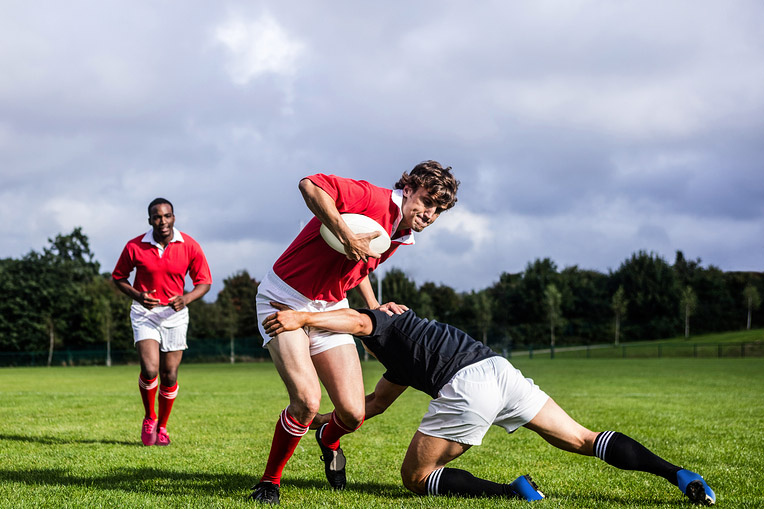
Dislocations affect joints – they occur when the two ends of the bone that normally meet at the joint are displaced away from each other, usually by an impact to the joint.
This means the bones cannot move against each other so the joint is immobilised. The ligaments and other structures around the joint may also be damaged. The x-ray here shows a dislocated finger joint.
The most common joints to dislocate include the shoulder, often in rugby players or with falls onto outstretched arms; finger joints, e.g. after a punch; the hip, often in people who’ve had hip replacement surgery; the kneecap (but less commonly the knee itself); and the ankle, e.g. after an awkward fall. A strong force is required to dislocate a joint so a fracture of an adjacent bone is often found – remember to look for signs of this when examining the casualty.
How do you recognise a dislocation?
The key recognition features of a dislocation include a history of injury involving impact to a joint and immediate pain afterwards, e.g. a rugby tackle; a crunching noise or sensation as the joint dislocates; an obvious deformity of the joint, e.g. a bulge from a bone’s head; swelling and redness to the joint; the casualty will be in significant pain; an inability to move the joint, due to the pain and because the bones cannot touch; and possibly signs of a fracture of a nearby bone of this has occurred.
What first aid should you give a dislocation?
A dislocated joint should be kept still, to prevent the bones moving further out of line and causing damage and pain. The joint can be supported with a sling or padding. As a first aider you must never try to put the bones back into position (or ‘reducing’ the dislocation) – without an X-ray or medical experience you can’t be sure it’s a dislocation, you may cause more damage e.g. if a fracture is present and you pull it out of line, and most importantly it is cruel to the casualty to attempt this without painkillers!
Otherwise, the treatment is as for a fracture – an ambulance is needed to transport the casualty to hospital. They must not be allowed to eat or drink as an operation may be required, or smoke or walk about as they could faint. Due to the amount of pain involved, shock is common with dislocations so may be needed to be treated.
The ambulance crew will assess the dislocation. They might decide to try and put the bones into a better position if they’re worried about damage to nearby nerves or arteries – e.g. an ankle dislocation can stop blood supply to the foot. Otherwise they will move the patient to hospital where an x-ray will be performed to look at the bones, and then a doctor will put the bones back into normal position. The casualty needs pain medication and sedation into the vein first, as reduction of a dislocation is painful! Sometimes an operation is required to reduce the dislocation fully.
